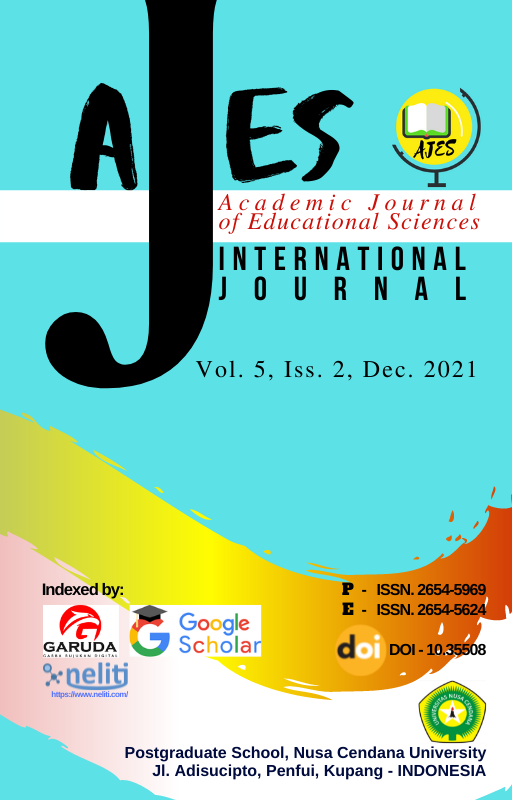DISTANCE LEARNING OF ENGLISH LANGUAGE AT HIGH SCHOOLS IN FRONTIER, OUTERMOST AND LEAST DEVELOPED REGIONS IN TIMOR NTT DURING COVID-19 PANDEMIC
Abstract
Corona virus pandemic which hit the world soon after the launching of school digitalization policy in Indonesia, has forced teachers and students to teach and learn from home, hence from a distance, including teachers and students in frontier, outermost and least developed regions (Daerah 3T) such as those in TTU, Malaka and Belu of NTT Province of Indonesia. This research, therefore, is designed to investigate how English language teachers at high schools in the three regencies managed distance learning during covid 19 pandemic, the effectiveness of the distance learning, problems encountered and the solution: and the potentiality for future enhancement of distance learning. Descriptive method is employed in this research and data obtained were analyzed qualitatively throughout identification, classification, and validation stages. The result shows that English language teachers at high schools in the three regencies generally ran two types of distance learning: digital and non-digital; but both were not effective because of such problems as: the limited access to the internet, electricity supply and lack of skill of both teachers and students in digital learning platforms and education apps. It is to overcome these problems that, teachers also ran non-digital learning. Possibility for digital distance education to be developed and enhanced in the future is obvious because teachers have very strong willingness to collaborate with teachers, also to let their students be able to collaborate with students, from other schools through digital schooling in this era of education freedom (merdeka belajar).

 John Wem Haan(1*)
John Wem Haan(1*)







